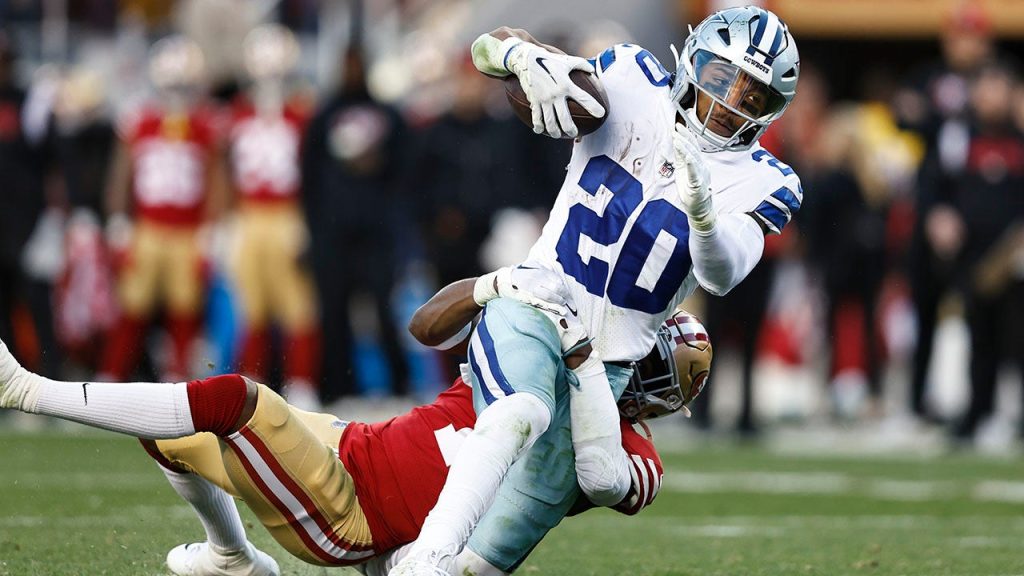The NFL made a significant rule change at the annual league meeting, with the competition committee voting to ban hip-drop tackles starting in the 2024 season. Anyone caught using this technique during play will face a 15-yard penalty, a potential fine, and a warning from the league. The decision to ban the controversial tackle was unanimous, with injuries caused by the technique being a major concern. Commissioner Roger Goodell has been a leading advocate for the rule change, with examples such as Jimmie Ward’s tackle on Tony Pollard and Mark Andrews’s injury influencing the decision.
Since 2022, the NFL has identified 105 hip-drop tackles out of 20,000 reviewed, with the tackle increasing the risk of injury by 25 times the standard rate. Despite the concerns raised by the league and the significant impact on player safety, the NFL Players Association has pushed back against the ban. The association argues that implementing a rule prohibiting the swivel hip-drop tackle could create confusion for players, coaches, officials, and fans. They call on the NFL to reconsider the decision, emphasizing the need for improvements to the game with health and safety in mind.
The move to ban hip-drop tackles reflects the league’s ongoing commitment to player safety and reducing the risk of injury during games. The decision comes after several high-profile injuries resulting from the controversial tackle, prompting the competition committee to take action. Players caught using the technique will face penalties and potential fines, signaling a clear message from the league that such tackles are not acceptable. The unanimous vote and support from Commissioner Goodell highlight the seriousness of the issue and the importance of prioritizing player well-being.
The ban on hip-drop tackles is a significant change that will impact defensive players and anyone attempting tackles during games in the upcoming seasons. By eliminating this technique from gameplay, the NFL hopes to reduce the number of injuries and create a safer environment for players on the field. With a clear directive from the league and potential consequences for offenders, teams and players will need to adjust their strategies and techniques accordingly. This rule change is part of a broader effort to prioritize player safety and ensure the long-term health and well-being of those participating in the sport.
The decision to ban hip-drop tackles has been met with both support and opposition, with the NFL Players Association expressing reservations about the rule change. While the league’s goal is to improve player safety and reduce the risk of injury, there are concerns about the potential confusion and impact on the game. Despite the pushback, the competition committee and Commissioner Goodell stand by the decision, citing the need to address a dangerous technique that has led to significant injuries in the past. The ban represents a proactive step towards creating a safer playing environment for all involved in the sport.
Overall, the ban on hip-drop tackles represents a significant change in NFL rules that will have far-reaching implications for players, teams, and the game itself. By addressing a dangerous technique that has caused numerous injuries, the league is taking a stand on player safety and making it clear that certain tactics will no longer be tolerated. While there may be initial challenges and resistance to the rule change, the ultimate goal is to create a safer and more secure environment for all those involved in the sport. With the support of the competition committee and Commissioner Goodell, the ban on hip-drop tackles sets a precedent for prioritizing player well-being and ensuring the long-term health of athletes in the NFL.


